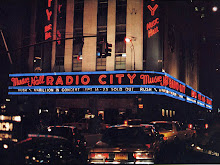 I'm way overdue for a review of a Rush CD...so here we go.
I'm way overdue for a review of a Rush CD...so here we go. When I think of Rush in the 90s, I keep coming back to Counterparts. I find it to be their best work of that decade by a long shot...and there's several reasons why, which I'll get to in a minute.
I want to talk more about what influenced Rush to make Counterparts the way they did, rather than breaking down the songs on it.
Yes, I will touch on the tunes, but only briefly...go here to Amazon to read music reviews there if you want in-depth reviews of each song.
To fully understand the creation of Counterparts, it's helpful to know how the band built up to this project, and the world of music that was around them at the time. It lends weight to this fantastic album in the band's massive cannon.
When I refer to "90s Rush," four of the band's Atlantic era studio albums come to mind: Presto (1989), Roll the Bones (1991), Counterparts (1993) and Test for Echo (1996)...and, of course, those four studio albums were capped off by the band's 4th live album, Different Stages (1998), for which this blog is named. That ended the 4th (and last) cycle in which the band would follow four studio albums with a live project.
Even though Presto technically came out in November of 1989 (the day I turned 21, actually...and a happy birthday it was...I was ecstatic, actually...woohoo!), it's still very much a work of the early 90s and the first baby of the band's gradual return to an edgier sound (and the band toured on it in 1990, so songs from it evolved onstage that year).
While the 80s produced some incredible work from the band and served as a period where the band advanced its songwriting ~ rather than concentrating on chops, like it did in the 70s ~ the decade involved an unconscionable Omaha Beach caliber attack of synthesizers. While much of it added substance to the music, much of it is very dated...actually, it was dated even back then, LOL.
Presto marked the band's slow (and sometimes painful) return to guitar-driven rock. After all, you have one of the most dynamic and talented rock guitarists, instrumental songwriters, and live performers of all time in the band, Alex Lifeson...uh, it might be a good idea to unleash him a little more. It's widely agreed in Rush circles that the crunch of Alex's guitar was stifled by the 80s synth period...it doesn't take much listening to Presto's two studio predecessors, Power Windows and Hold Your Fire, to figure that out.
While 1991's Roll the Bones built on the new pattern of edgier guitar work started by Presto, it meandered a bit; featured a modest comeback with instrumental work, and even experimented with a little rap...but the band would soon get a BIG push in the direction of edgier music. After inspiring and mentoring countless younger bands, a music scene ~ and a new bass player on the scene ~ would inspire Rush and the band's evolution.
The advent of grunge and the Seattle Sound in 1991-92 would lay the groundwork for Counterparts. It was merely weeks after the release of Roll the Bones that Nevermind, Nirvana's classic, hit the airwaves. By 1992 the grunge scene was literally evolving week to week, and sky-rocketing with bands like Pearl Jam, Soundgarden, Alice in Chains, and Nirvana at the helm while Rush was on tour that year. Edgier alternative bands such as Smashing Pumpkins and Green Day, which essentially provided an advanced version of punk rock, were also tearing up the scene.
While this new music revolution out of Seattle caught the eye of Geddy, Alex and Neil ~ giving them ideas for the material in their next project ~ it's their opening band in 1991-92 that would prove to have equal if not more significant influence on several levels.
The opening band on the Roll the Bones tour, Primus, was out of the Bay Area and featured singer /bass player Les Claypool. While Primus was known for its silly onstage antics, goofy song themes, and album names like Sailing the Seas of Cheese and Pork Soda helped to loosen up the members of Rush on tour, it was Claypool's bass acrobatics that would inspire Geddy Lee (already a member of the bass hall of fame years before that time, if there's such a thing).
The thick trunk of Primus' sound is Claypool's dynamic bass work, which can only be described as a brainmelter. He experiments with many different methods on the instument, notably chord work, which by 1991 wasn't very widely utilized or known in the rock world. While Geddy had noodled around with bass chords and voiced them live onstage (see "By-Tor and the Snow Dog" on the Exit...Stage Left DVD), he hadn't explored them to the level of Claypool's experimentation.
Claypool's influence revolutionized Geddy Lee's approach to the bass. He was now attacking the instrument with more fervor, and getting more into bass chord voicings. Further study of the styles used by both bass players will reveal Claypool's "herky jerky" approach, while Ged tends to exhibit a smoother style that floats like a knife through butter ~ even when he advances his methodology to the bass like he did in 1991-92.
 While Ged's bass work represents only one of several dynamic compononts in Rush, it can be argued that it was the driving force behind the edgier approach to the Counterparts sessions when they began. Recalling reading in music magazines at the time, Alex also came into the sessions with grunge CDs such as Dirt by Alice in Chains in his CD player; so he was ready for a more aggresive approach too.
While Ged's bass work represents only one of several dynamic compononts in Rush, it can be argued that it was the driving force behind the edgier approach to the Counterparts sessions when they began. Recalling reading in music magazines at the time, Alex also came into the sessions with grunge CDs such as Dirt by Alice in Chains in his CD player; so he was ready for a more aggresive approach too.The Counterparts sessions began like most other Rush projects, with Ged & Al jamming about on guitar and bass. This set them on track with songs such as "Stick it Out," "Animate" (the project's high-on-speed, opening assault), and "Cut to the Chase." Legend has it that Lifeson "banned" synthesizers from entering the studio, which caused some heated disagreements between he and Lee, and even some hot tempers, if recollections from my research at the time are accurate...but never fear, the band isn't breaking up, these guys are lifelong pals...so eventually they found some compromise, which I'll get to in a minute.
So the sessions continued in the manner they usually do with Rush, which the band had down like clockwork since this was their 15th studio project. Al & Ged jammed, wrote and experimented, Ged did some arranging while Al probably took a nap, drummer /lyricist Neil Peart soon came in with his contributions, everyone collaborated in polishing off the songwriting, then the album was recorded...and before long we had a CD that clocked in 11 tracks and about an hour's worth of music. Yep, that's how it happened in one short paragraph.
While the crown jewels of Counterparts are widely regarded to be "Animate" and "Nobody's Hero," the CD also contains some hidden gems; some of the most experimental music Rush put out between 1982's Signals and 2007's Snakes & Arrows.
Four "lost gems" come to mind from Counterparts, which are "Between Sun & Moon," "Alien Shore," "Double Agent," and "Leave that Thing Alone."
"Between Sun & Moon" finds Alex tweaking his sound to echo something one might expect from the likes of Mark Knopfler of Dire Straits. It also features interesting voicings from Geddy's singing, which seem to replace what would have been keyboards/synthesizers on an earlier project. It seems the band had found a way to keep everyone happy as the band continued on a track toward a less synth-driven, edgier rock sound.
"Alien Shore," from a lyrical standpoint, is arguably be the most sophisticated love song ever written. It also highlights the bass playing advancements of Ged, featuring one of the greatest bass solos in the history of recorded music. The solo does an excellent job of bringing out the influences and enhanced chops that Ged perfected prior to the Counterparts sessions...and when one considers that he's singing while doing it, it comes off as even more impressive.
"Double Agent" is the most interesting and experimental track on Counterparts, and to the delight of fans was performed live on the tour in 1993-94. In a successful attempt to articulate a dream sequence, Ged speaks poetry intermittent with singing lines to capture the essence of a mystical state of mind.
"Leave that Thing Alone" is the dark horse of Counterparts, and winds its way from soaring guitar motifs to almost amusing passages that sound like something out of a spy movie (I don't know if that's what the band intended, but that's how many fans interpreted it). "Leave That Thing Alone" is one of a handful of instrumentals in the band's catalog, and was on par with old instrumental classics "La Villa Strangiato" from Hemispheres (1978) and "YYZ" from Moving Pictures (1981) before "The Main Monkey Business," "Hope," and "Malignant Narcissism" appeared on Snakes & Arrows (2007) in a most shocking 1-2-3 punch.
Unique within the many studio works of Rush, this project thematically approached the issue of love and human relationships...so you get a few "love songs," if you will (Rush style, of course) on Counterparts. Just be warned, this is a little different from the love song styles of Sinatra, Perry Como, and Celine Dion.
Initally one wouldn't think "love song" themes wouldn't jive with Rush's sound, but the formula produces surprising and often very satisfying results on the second half of the disc in tunes such as "Alien Shore," "The Speed of Love," and "Cold Fire".
The project's closer, "Everyday Glory," boasts some Peart's most passionate and inspiring lyric writing to date, and he's almost prophetic...remember this was 1993:
"If the future's looking dark,
we're the ones who have to shine.
If there's no one in control,
we're the ones who draw the line.
Though we know we live in trying times,
we're the ones who have to try.
Though we know that time has wings,
we're the ones who have to fly."
So, that's it...that's Counterparts for you...definitely worth your time and money if you're not familiar with it. It's the stongest effort by Rush from the 1990s, and unleashes great songwriting with top-notch chops from the beginning to the very last track.






















